If you were to ask many in the paranormal field what the United Kingdom is known for, they would undoubtedly answer, ghosts and haunted places. However, what many may not know that apart from the occasional sighting of something strange swimming in a Highland Loch, the British Isles is home to many mysterious creatures.
Richard Freeman, author and cryptozoologist, is all too familiar with the shadowy creatures that stalk the nights and moors of the UK and Ireland.
RICK HALE recently spoke to Richard and learned, there is more than just ghosts to the UK.

SPOOKY ISLES: What first sparked your interest in cryptozoology? Did you have a personal experience with an elusive beast?
RICHARD FREEMAN: I can answer the question of what sparked my interest in cryptozoology with three words, classic Doctor Who. I grew up in the 1970s when Doctor Who was at its peak with Jon Pertwee and Tom Baker. It was dark, gothic, weird and genuinely scary unlike the pathetic, woke excrement that the BBC tries to pass off as Doctor Who these days. It was as much about horror as it was about science fiction.
There were giant, poison seeping maggots crawling out of Welsh slag heaps, Intelligent reptiles from the age of the dinosaurs now awoke and looking at humans as upstart vermin, Lovecraftian aliens that animated plastic, turning children’s toys, shop dummies, plastic flowers and even furniture into killers, sentient flesh-eating plants the size of Saint Paul’s Cathedral and giant rats gnawing peoples legs off down Victorian sewers! You never got this king of visceral terror in shows like Star Trek.
Some of the monsters were based on supposedly real creatures like the yeti and the Loch Ness monster. This and a lifelong love of natural history shows like David Attenborough’s The World Around Us and Life on Earth combined to make me fascinated with strange creatures and the concept of unknown animals.
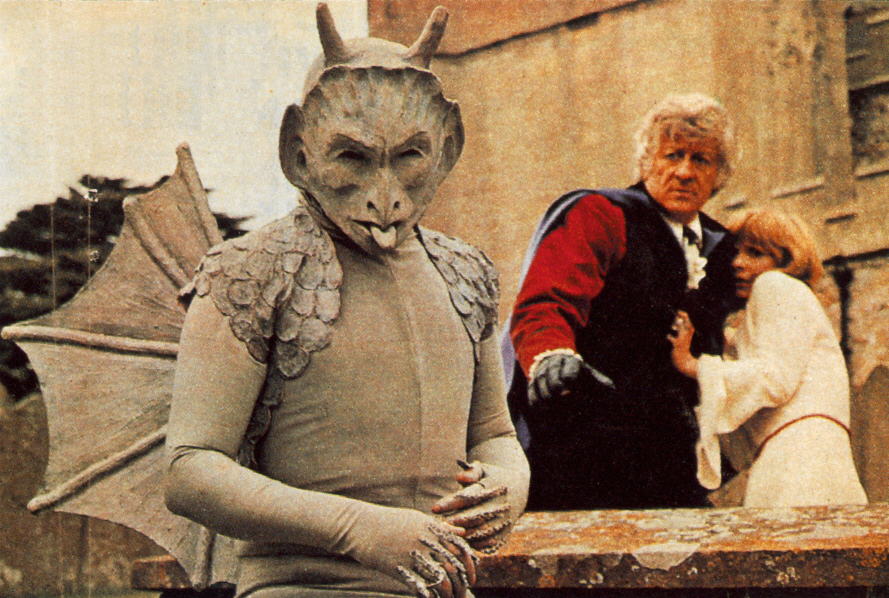
Years later I became a zookeeper specializing in reptiles and later on a gravedigger (great gothic credentials!). I studied Zoology at Leeds University and was appalled by the schoolboy errors made by professors there. This soured me on academia very much.
Whilst hunting the Beast of Bodmin Moor in Cornwall I visited the now sadly defunct Potter’s Museum of Curiosities at the Jamaica Inn. This was a bizarre collection of stuffed animals in weird poses (wedding, duels, schoolwork, playing cricket) and a heterogeneous accumulation of eccentric marginalia (head of a man-eating crocodile displayed next to a model of a church made out of bird feathers next to a Maori axe for example). Here I picked up a little magazine called Animals & Men (which was not as rude as it sounded). This was the journal of an outfit called The Centre for Fortean Zoology, a group that studded mystery animals and animal folklore. I subscribed and then began to write letters and articles for the magazine. I visited Jon Downes the director of the CFZ in Exeter, Devon, on a couple of occasions. Jon and he invited me asked to become the zoological director of the CFZ, so I moved down from Leeds and the rest is history. Since then I have hunted creatures like the Tasmanian wolf, the orang-pendek, the giant anaconda, the yeti, the Mongolian death worm and the Almasy all across the globe.
The United Kingdom is more well known for its haunted locations. What are you thoughts on ghosts? And have you ever been on a paranormal investigation?
Ghosts are a separate area of Forteana from cryptozoology but there are some grey areas were the two cross over such as black dogs and phantom beasts like the wonderful Gef the Talking Mongoose.
I think the term ‘ghost’ is a catch-all term for many desecrate phenomena, most of which I suspect has little to do with the souls of dead people. I have visited supposedly haunted areas and used to drink in a famously haunted pub where I saw exactly zero ‘ghosts’.
I have experienced minor poltergeist phenomena on two occasions and once saw what looked like the black silhouette of what appeared to be a child of seven or so in a caravan in Devon.
England is not well known for Bigfoot-type creatures and yet there has been a handful of sightings. Are these cousins of the American Sasquatch? Or something else?
The chances of a Sasquatch-like creature living undetected in the UK is zero.
Britain is a small country that has had more deforestation than any other country in Europe. A primate species would need a base population of around 500 individuals in order to be viable. Think about it, 500 plus 7-8 foot hominins running around the British countryside and they have not been killed or captured? Most of what is left of our degraded countryside is farmland or unproductive monoculture plantations. This is not the forests of Tibet or Canada. I think the reports of hulking, hairy man-like figures in the UK are something other than true flesh and blood cryptids and may be paranormal in nature.
Follow up question. If Bigfoot is real what could it be? Is it a complete unknown? Or could it be something that shows up in the fossil record?
There are a number of large, upright walking, unknown primates reported from around the world. The yeti and sasquatch are just the two best known.
There is the orang-pendek in Sumatra, the Almasty in Russia and the Yeren in China for example.
Fossil and DNA evidence is now mounting up to support their existence. In 2018 water from a pool in the mountain of Bhutan was sampled as part of an expedition hunting for the yeti. It was tested for eDNA (environmental DNA, cells that are shed into the environment by the organisms that live there). The tests yielded eDNA from a primate that shared 99% of its genetic make-up with humans. That’s more closely related to man than chimpanzees.
In other research Professor Brian Sykes, a geneticist from Oxford University examined the mitochondrial DNA from the teeth taken from the skull of a man from the Caucasus Mountains. The man, who died in the 1950s, was said to be a hybrid of a human father and an Almasty mother. The Almaty is the Russian wildman, a sub-human hominin reported from the mountain ranges and forests of the former USSR. Sykes isolated DNA that he thinks is from an unknown species of hominin(a relative of the ancestors of man) that arose in West Africa and migrated out of that continent and into Russia were it’s descendants still lurk to this day.
This may seem astounding but it is backed up by other findings. New fossil hominins are being found all the time. Back in 2005, the 50,000-year-old remains of Homo floresiensis were discovered on the Indonesian island of Flores. At around three feet tall it was at first thought to be a dwarf, island form of Homo erectus. A recent examination of the bones, however, showed that they were more closely related Homo habilis a more primitive hominin that lived in Africa up to 1.9 million years ago and that, up till now was not suspected to have a lineage outside of Africa. More recently two more species of hominin were uncovered at Red Deer Cave in China. Neither has been given a name yet but both seem to be dependents of Homo habilis. These remains were much more recent, only 10,000 years ago, an eyeblink in evolutionary terms. More recently still another Homo habilis descendant has bee uncovered in the Philippines and has been named Homo Luzonensis. It seems to be related to Homo floesiensis and was about the same size and dates to the same age.
Other hominids were far larger. Homo denisova or the Denisovans were until recently known only from finger and toe bones found in a Siberian cave. The bones were so well preserved that a whole genome was taken from them. More recently a massive jaw bone from the same species was identified, having been found in a cave in Tibet. It was far larger than a modern man.
We know that Neanderthal man, Homo neanderthalensis, interbred with modern man. Modern Eurasians have as much as 4% neanderthal DNA in their genome. Likewise, Denisovans mated with modern man leaving 3-5% of the DNA in the populations of Melanesian and Australian Aborigines and 7% in the Papuans.
In other populations, there are genetic markers that suggest their ancestors interbred with other hominin species that are currently unknown from the fossil record and only known from their genetic material found in the genome of modern populations. Such markers are found in sub-Saharan Africa.
It is possible that some kind of archaic, large relic hominin, probably of an unknown species is still alive in the world today. The Yeti, Sasquatch and Yeren are very large, the Russian Almasty is smaller but still larger than a modern man. The Orang-pendek, however, seems more closely related to the orang-utan. Hair we found in the jungles of western Sumatra was examined by Lars Thomas, an animal hair expert from Copenhagen University. He concluded that it was from a primate related to but distinct from the Sumatran orang-utan.
Nessie is arguably the UK’s most famous cryptid. Personally, I don’t believe it’s a dinosaur. What are your thoughts on Nessie?
Loch Ness is far from the only monster haunted lake. Hundreds of usually deep, cold watered lakes around the world have such reports. Many of them are liked to the sea via rivers.
The chances of the Loch Ness Monster being a plesiosaur are nil. It would be more likely to be Elvis in a rubber monster suit! Plesiosaurs died out 65 million years ago. They were air breathers so they would be seen breeching by anybody watching the loch for any length of time. They were also saltwater animals, not freshwater.
Most sightings can be explained in mundane terms. The loch is deep and steep-sided so boat wakes can hit the shore and bounce back across the water remaining visible for half an hour after the vessel has left. There are temperature gradients in the loch that cause violent undercurrents that can drag debris against the prevailing wind. Also, seals have been known to enter the loch. In a lake with no monster traditions, such things would not cause a stir but Loch Ness is arguably the most famous lake in the world and Nessie the most famous monster. Anything odd seen in the waters of Loch Ness morph into the monster in the mind of the witness.
However, there is a hardcore of sightings that cannot be explained so easily. These, I think, refer to huge fish. Fish take their oxygen directly from the water and ergo are seen less as they stay close to the bottom. The beluga sturgeon can reach 23 feet 7 inches and is a possible candidate. The wels catfish can reach 16 feet long and were introduced from eastern Europe into the UK by the Acclimatization Society in the 19th century. Finally, we have the European eel. Eels live in freshwater and when they are ready to breed they swim out to the Sargasso Sea where they breed and die. The young eels or elvers swim back to the same watercourses their forbears inhabited and the system goes around again. There is a theory that some eels never sexual develop and hence lake the impetus to enter saltwater to breed. These sterile eels are known as eunuch eels these stay in freshwater getting larger and older. Nobody knows just how big they get but in 2004 a group of Canadian tourists claimed to have seen an eel in the shallows of Loch Ness that was 25 feet long. In Ireland, such monsters are called ‘horse eels’. Two killed by poison at a lake near Drewstone House, County Meath in 1907 measured 10 and 12 feet long.
Mysterious black dogs are a staple of English, Scottish and Irish folklore. They have been called, “hounds of hell” are they diabolical or something else?
Black dogs with burning red eyes, shaggy fur and huge size are found in every county in the UK. They have many names such as Black Shuck, Padfoot and The Barghest.
These seem not to be flesh and blood creatures but things of a paranormal nature. They are part of what I call the global monster template. In every culture, you will find the same kinds of monsters.
Dragons are the most ancient, powerful and widespread of monster archetypes and occur in every culture.
There are also stories of hairy giant, man-like beasts, little people (goblins, pixies and so on) huge birds, monstrous dogs and monstrous cats.
I have likened these the creatures that would have prayed upon or been in competition with our australopithecine ancestors on the plains of East Africa several million years ago.
When the australopithecines moved out of the forests and onto the grasslands to exploit new food sources they met with some dangerous animals. They were preyed upon by crocodiles and pythons as well as wild dogs, leopards, lions and eagles. They would have been in competition with other primates some larger and some smaller than they were. These ancient foes have analogues in the global monster template.
What I think is happening has to do with ‘fossil memories’. These are subconscious fears and behaviour handed down in our genetics through the generations.
For example, black is associated with evil due to our ancient fear of the night when predators were roaming and humans were at a disadvantage. In houses, that have more than one story, bedrooms are almost always upstairs because our ancestors in Africa slept in trees at night to avoid predators. I think some monster sightings are manifestations of these ancient fears from the gestalt subconscious of mankind. The Tibetans believe that, under intense, prolong concentration the human mind can create beings called ‘tulpas’. Tulpas are viable to other humans and can take on a physical form. They can also take on their own will and personality. Maybe many monster sightings are tulpas created by our collective fears.
Monsters seem to fall into two broad groups the first being unknown animals, flesh and blood beasts. That is what my book is mainly about and what I am mainly interested in.
The second group is what may be termed paranormal. They may be manifestations of our collective subconscious as noted above or creatures from some other dimension or plane of existence. Black dogs belong in this latter group.
There have been several reports of UFOs in England. What are your thoughts on alien visitation? Or could people just be seeing things?
I have no interest in UFOs, there are far too many credulous crackpots in the field.
The so-called ‘aliens’ are suspiciously human-looking, two eyes, a mouth, a nose, two arms and two legs. The chances of something that looks so human evolving on another biosphere are astronomically unlikely.
These stories of alien abduction have much in common with old stories of fairy abduction.
Victims of fairies were said to be taken away to fairyland and upon returning they find that hours or days have passed when their time there felt much shorter.
This sounds very like the missing time alien abduction victims report. Pixies and fairies were said to place magical pins behind the ears of victims to stop them from remembering their time in the fairy kingdom. This sounds very like ‘alien implants’.
The idea of human hybridization with aliens is very like stories of human/fairy hybridization. Fairies would take human children and leave a ‘changeling’ in their place. The changeling would sometimes look human but sometimes look hideously ugly. The human child would be taken away to improve the weakening bloodline of the fairy people. Alien abductions seem to be an updating of the fairy phenomena.
You have written several books over the years on cryptozoology. Your latest, Adventures In Cryptozoology Volume I, was released over the summer. What are some of the creatures you cover? And can we look forward to a Volume II?
Adventures in Cryptozoology is the first of a two-volume collection published by Mango.
It is an introduction to the field of cryptozoology.
I list the many creatures once thought to be nothing but folklore but later proved to be real creatures. These include the gorilla, the giant squid, the Komodo dragon, the okapi and many more.
Large animals are still being discovered today.
Then I go on to discuss the scientists that have been involved in the search for unknown animals from the 18th century to the modern-day.
The next chapters look at differing types of cryptid.
There is a chapter on modern-day sightings of dragons. These include monstrous lizards as well as flying beasts. One of the most impressive took place in Oconto Falls, Wisconsin. Multiple witnesses saw a classic, winged, western dragon, four legs, two bat-like wings. The creature spat blue and orange balls of fire. The dragon was lager than a plane and was covered in white scales.
We then move on to chapters about lake and sea monsters respectively. One of the most dramatic comes from a large but fairly shallow body of water called Lake Chany in Siberia. People living around the lake say that a 30-foot, serpentine creature has killed and eaten 19 people in the last decade or so. The beast is said to ram and overturn boats then devour those who fall into the water. One woman saw this occur to her grandson whilst watching from the bank. Another man was fishing on the lake when the creature flipped their boat. He swam to shore but his friend was dragged down and eaten. The people have asked for an official government investigation but none has been forthcoming.
Out on the open ocean, there have been many astounding encounters. In the early years of the 20th century, many French naval vessels encountered sea serpents in Halong Bay, Vietnam. Admirals and captain saw the beasts as well as rank and file sailors. Some even fired on the creatures with no effect whatsoever. The 60 to 100-foot creatures were likened to Asian dragons by those who saw them.
Another fascinating case was that of five teenagers from Pensacola, Florida who went out to go skin diving on a WWII wreck. They were using a naval raft to paddle out the area. However, a storm swamped the raft and left the boys clinging to a 20-foot metal frame on a buoy. Fog rolled in and then a huge serpentine head and neck rose out of the ocean causing the boys to panic and jump into the water. Four of them were dragged to their deaths by the creature.
In the next chapter, I look at mysterious apes and relic hominids (relations of the ancestors of man). These include well-known creatures like the yeti (which incidentally is not white but brown or black) and Sasquatch and less well-known creatures like the orang-pendek, the Almasty and the Yeren. In once case, an 8-foot Almasty stalked and terrorized a group of youths on the Kola Peninsula in Russia. It hurled rocks and branches and perused the frightened youths for several days. A park ranger who investigated saw the creature too.
Finally, we look at a mixed back of creatures that don’t neatly fit into any other category. These include legendary beasts like the unicorn, griffon and basilisk and what may lie behind the stories. I also look at creatures such as the death-dealing Mongolian death worm that haunts the Gobi and the weird Tatzelwurm of the Alpine mountains. The Beast of Gevaudan. This was a monster that terrorized a region of southeastern France killing around 118 people between 1764 and 1767. It ran rings around hunters sent by King Louis XV and killed with impunity. The monster may have been a sub-adult male lion.
The book was going to be one volume but it was too long. The book was broken into two volumes. The second is out in 2020.
Volume two covers giant creatures, known species that have reached vast sizes such as giant crocodiles and snakes. It then looks at supposedly extinct animals that may still be around. These include the Thylacine or Tasmanian wolf, a dog-like, flesh-eating marsupial with stripped flanks. The creatures were supposedly hunted into extinction in the 1930s but there have been over 4000 sightings since then, some by zoologists and park rangers. Other creatures covered include the giant ground sloth, supposed living dinosaurs (actually probably something very different) and the continued existence of the Caspian tiger.
I also cover my own personal adventures in monster hunting expeditions all over the world. This includes searches for the yeti, the Tasmanian wolf, the orang-pendek, the giant anaconda, the Almasty, the Mongolian death worm and the gul.
Finally, I finish off with a chapter giving advice to the reader on how to set up a cryptozoological expedition of their own. I would like to encourage more people to do this. The more sensible people we have in the field the more chance we have of proving the existence of cryptids.
Why is mainstream science so skittish where cryptids are concerned? What if Bigfoot was the missing link? Or Nessie was a previously unknown or extinct seal?
I think scientists have failed to embrace cryptozoology through fear. It’s fear of ridicule from their peers and fear of the creatures themselves. The idea that there may be real living monsters and creatures of which they have no knowledge fills them with raw terror. Every new idea in science faces opposition and many times those who study these fields are thought of as heretics.
In 1820 a man died of starvation in a cold Parisian gutter. He was given a pauper’s burial and the few who attended did so only to snicker at the feeble-minded fool that believed in sea monsters. The man was the French zoologist Pierre Denys de Montfort. Had he lived until 1857 he would have seen his wild stories vindicated. Pierre Denys de Montfort was a malacologist, an expert in molluscs. He was also a scientific heretic, for he dared to research something that the high priests of science deemed to be an old wives’ tale, giant cephalopods.
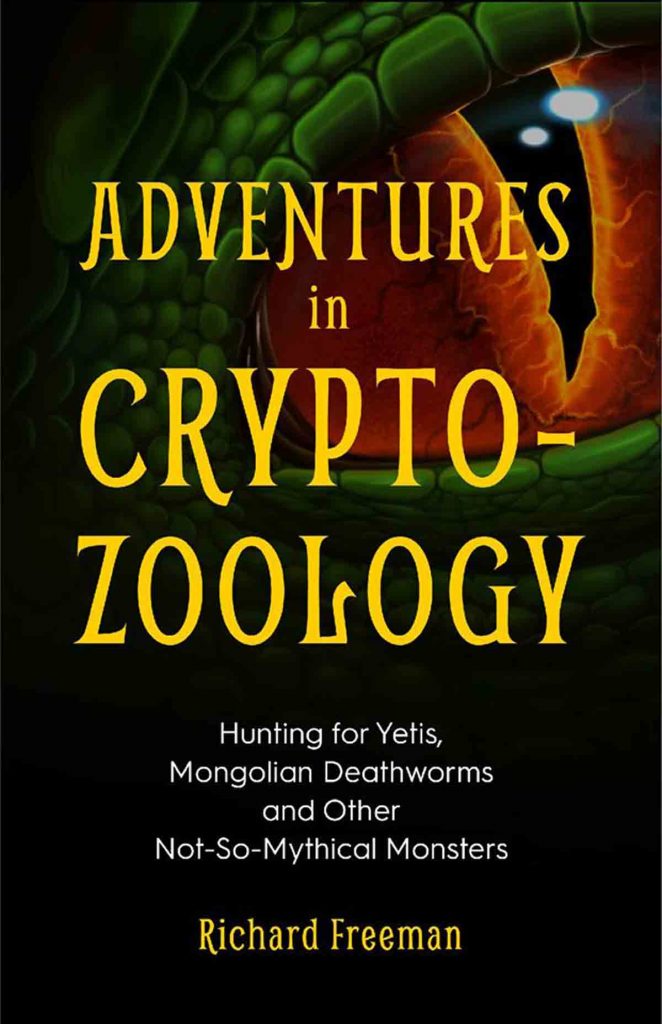
He was born in 1764 and was fascinated by nature from an early age. Sadly, he was of a generation that lost many scientists to history due to the French Revolution, and a republic that stupidly, in the words of public prosecutor Antoine Quentin Fouquier-Tinville – did not need scientists. He fared better than most. After serving in the army and after a stint as assistant to the geologist Barthelemy Faujas de Saint-Fond, he became attached to the Jardin des Plantes, the main botanical garden in Paris. For a time, he was a much sought after scientist, being offered places on a number of expeditions. He travelled to Egypt and Germany to study geology. His gift for languages did not go unnoticed, and he became attached to the Museum of Natural History as a translator.
He investigated the origins of ambergris (the indigestible beaks and claws of cephalopods vomited up by sperm whales like gigantic owl pellets) and became interested in the idea of huge cephalopods. He interviewed American whalers who had settled in France about the evidence for such creatures. One such man, Ben Johnson, told of a monstrous tentacle found in the mouth of a sperm whale they had killed. The tentacle was 35 feet long and had been severed at both ends, De Montfort reckoned another 10-20 feet of it had been lost. It was as thick as a mast with suckers the size of hats. Another man, Reynolds, told of seeing what he thought was a red sea serpent lying next to a whale they had killed. It was discovered to be a massive tentacle 45 feet long with suckers as large as plates.
On publishing his theories de Montfort was met with instant hostility in France. Despite being closer to the truth than anyone had imagined he became a pariah in scientific circles because of his theory. Out of work in scientific agencies, he retreated to the country and wrote books on beekeeping and linguistics. Returning penniless to Paris, he scratched the most meagre of livings identifying shells for naturalists and collectors. He became a wretched, ragged figure and finally a destitute alcoholic. He was found dead of starvation in 1820, a pitiful end for a man once associated with the most august scientific institutes in Paris. Pierre Denys de Montfort has been largely forgotten. Despite having created 25 genera still in use today, de Montfort’s career barely merits a footnote whilst his better-off contemporaries such as Georges Cuvier are still celebrated today.
Gallingly, after his death, de Montfort was proved correct when parts of gigantic squid began to fall into the hands of scientists. Danish zoologist Professor Johannes Japetus Smith Steenstrup published the first scientific description of the giant squid. We now know the giant squid (Architeuthis dux) can reach sixty feet long.
This insane, blinkered attitude remains until this day. Many scientists reject the idea of cryptids without ever even looking for them. The idea that anyone who has ever seen a monster anywhere in the world is a liar, deluded or the victim of a hoax is simply untenable.
Do you think mainstream science will ever come around to taking a serious look at cryptids.
A minority scientists are now looking at cryptozoology in a more favourable light.
After the discovery of Homo floresiensis, he said that it was time for ‘cryptozoology to come in from the cold.” Later, whilst talking in the subject of new species of fossil honinin he said that he would not be surprised if one of them turned up alive in somewhere like Sumatra or Vietnam.
I think that it will take a type specimen of one of the cryptids to convince the sceptics.
The late Dr Grover Krantz, who studied the Sasquatch once said that even if you had a dead Sasquatch in your laboratory you would have to drag them to the lab and rub their faces in the corpse before they would take notice.
Lastly, what advice would you give the novice cryptozoologist?
The final chapter of volume two of my book is entirely about setting up your own expedition. I won’t spoil it all but getting good native guides is the biggest key to success. Also you could do a lot worse than joining up with the Centre for Fortean Zoology.
You can buy Adventures in Cryptozoology Volume 1, by Richard Freeman, from Amazon.

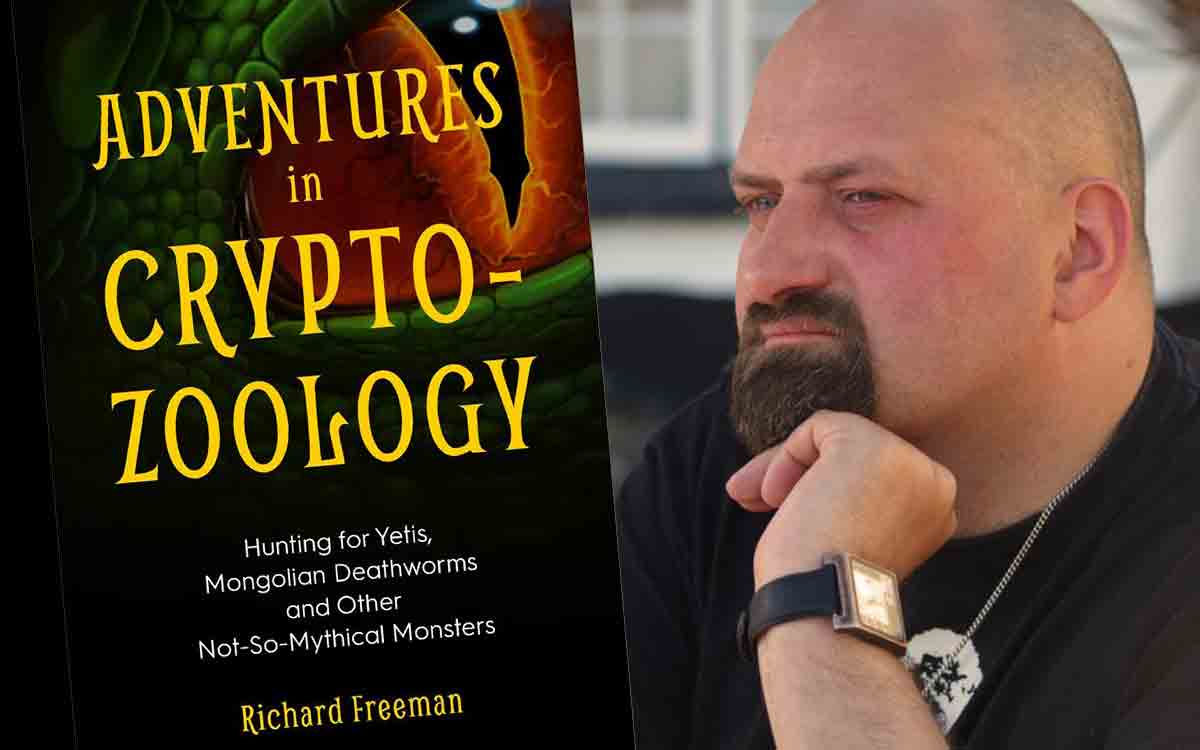

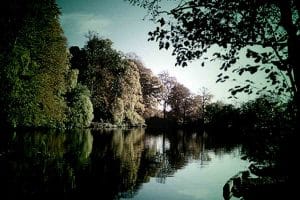
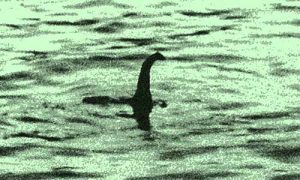
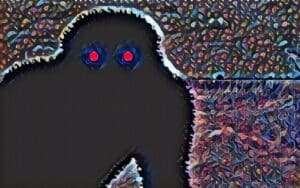
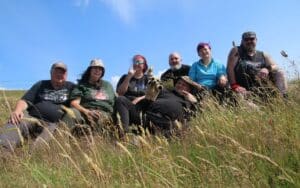

One lesser known attribute of the huge black dogs seen in the UK is when the legends seem to appear, and how very geographically constrained the apparitions are. These factors are linked, since these legends often seem to turn up in the Seventeenth Century, right around the time when iniquitously high taxes on imported luxury goods such as tobacco, brandy and wines produced an incredible surge in the amount of smuggling.
These legends thus fall under what Mr Glen Vaudrey terms the “Health & Safety Beast”, since they are warnings for the unwary to stay out of certain lanes by the light of the full moon, lest they bump into smugglers there and receive a sharp tap to the noggin to render them incapable of reporting what they saw to the Revenue men.
However, if you tell people about a monster often enough, they begin to see it. There are plenty of historical reports of giant black dogs where smugglers never trod, which leads me to the belief that the world is stranger than we give it credit for being.